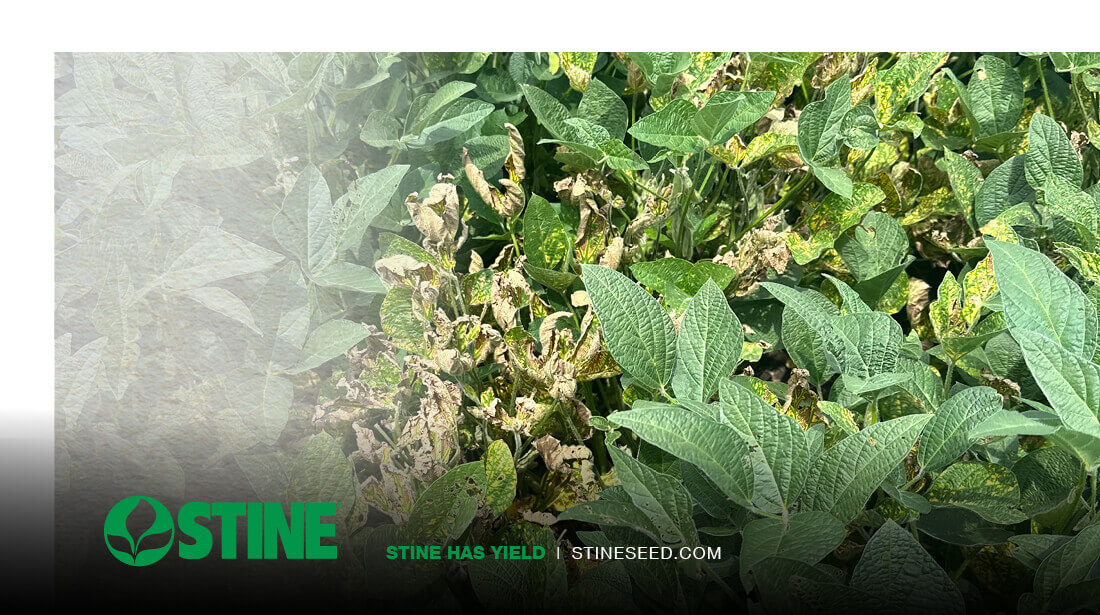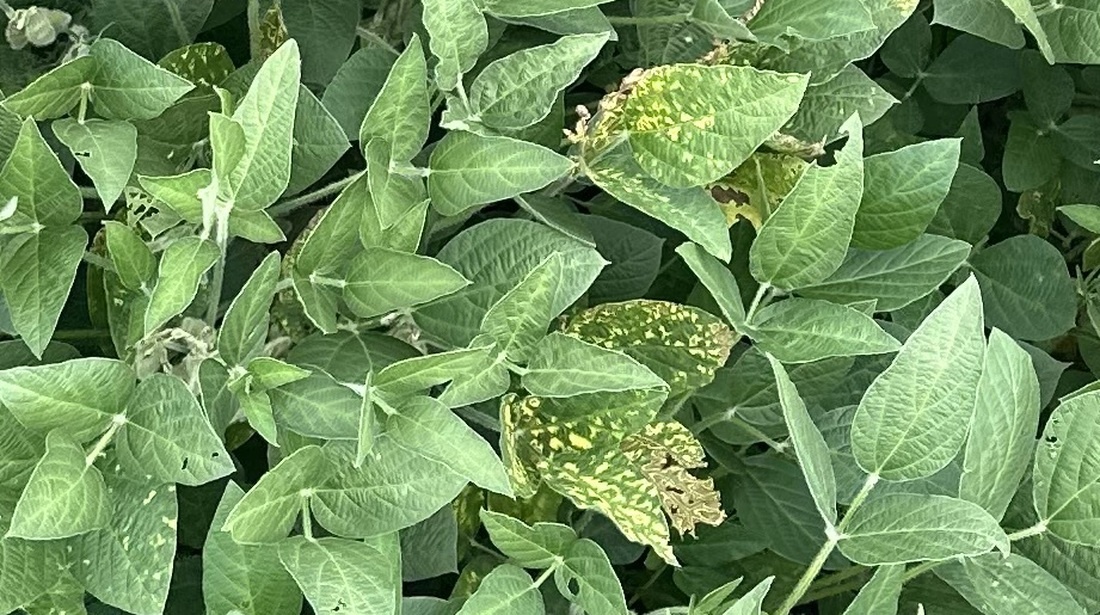Growers should be on alert for sudden death syndrome (SDS) in soybeans. A Crop Protection Network report cites SDS as the third most damaging soybean disease in the U.S. in 2023, with millions of bushels lost in the 29 soybean-producing states. Now, it’s back for the 2024 season with no signs of slowing down. According to Iowa State University Extension, SDS can cause up to 40% yield losses in severe infestations, especially when symptoms develop early in the season.

“SDS continues to be one of the most prevalent and dangerous diseases to soybean production,” says Tyler DuBay, Stine® soybean technical agronomist. “Annually, it causes millions of dollars of yield loss, and 2024 likely won’t be different as it’s starting to appear in many parts of the Midwest.”
Stine agronomists and sales reps are reporting SDS in their regions and working with their growers to scout for the disease. Here's what we know about SDS.
Occurrence
SDS is a soilborne fungal disease that remains if not properly controlled.
“SDS spores, or chlamydospores, are capable of overwintering in the soil or in fields with residue left behind by the last infected soybean crop,” says DuBay. “Once the spores reactivate, they infect the roots, which then produces a toxin that is translocated through the plant to the leaves and begins to show interveinal symptoms of infection.”
According to the University of Minnesota Extension, SDS infection and disease development are caused by a few different factors, including early planting, using a susceptible variety and planting in cool, wet soils.
“Wet conditions when paired with desirable soil temperatures increase the disease’s severity. If growers have experienced these conditions lately, they need to keep scouting their fields.”
Tyler DuBay, Stine soybean technical agronomist
SDS is also more prevalent in areas with soybean cyst nematodes (SCN).
“In 2023, SCN was the No. 1 contributor to yield losses caused by a disease or pathogen,” says DuBay. “There’s no question SDS will be around again this year if SCN is present as the disease tends to follow SCN.”

Symptoms
Growers scouting for SDS may first notice scattered yellow patches in a field. These typically appear between the R1 and R6 growing stages or in late July and early August.
“A good indicator of SDS is random yellow spots between leaf veins. They eventually turn into brown lesions that lead to interveinal necrosis.”
Tyler DuBay, Stine soybean technical agronomist
Experts indicate leaf cupping or curling, as well as stem discoloration, leaf detachment from the petioles and soft, rotten roots, may occur when SDS is present.
The disease is often confused with brown stem rot, so it’s important to dig deeper to find the true culprit of any foliar or stem-related issues in your field. Since SDS is a stem disease, one way growers can discern it from brown stem rot is by cutting into the stem of the plant and reviewing the color of the pith.
“To verify SDS is present in your field, if you see foliar symptoms, split the stem lengthwise with a cutting utensil,” says DuBay. “The internal tissue of the soybean plant will be a reddish to gray coloration and the pith will be white. Brown stem rot has similar foliar symptoms but causes a dark pith.”
Management
One of the best strategies to manage SDS in soybeans is to get ahead of the disease. This includes planting SDS-tolerant soybean varieties, and Stine offers many. Growers can also use fungicides to help protect the seed from the start and later in the season.
“Additive products, such as Stine seed treatments, will supplement even higher performance against SDS.”
Tyler DuBay, Stine soybean technical agronomist
Other avenues include tillage to break up the fungus in leftover residue and in the soil, rotation to a non-susceptible crop, staggering planting dates as the disease prefers early planted soybeans, and controlling compaction.
SDS scoring
Stine is always looking for new ways to help growers combat yield-robbing problems in the field, including SDS. We’re employing drones for the first time in our plot program to assist with aerial crop imaging for SDS scoring.
“We have the largest SDS efficacy trial to test most Stine brand products that could be exposed to SDS. Obtaining soybeans with high SDS tolerance will enable growers to ensure they will have a genetic yield advantage.”
Tyler DuBay, Stine soybean technical agronomist
Outside of Stine’s research, the only known effort of this kind is at Kansas State University.
“Their efforts piqued our interest because no other seed company or university is doing this research,” says DuBay. “For 2024, Stine will lead this effort with consultation from K-State. It’s an exciting venture for us this year.”
Work has already begun, as SDS first appeared in our SDS research plot in southeast Iowa earlier last week.
“Our goal with the plot is to monitor and score low and highly tolerant varieties, so we can better determine scores for these varieties,” says DuBay. “That, and we really want to prove that aerial crop scouting for SDS can work. If we can prove it does, we can take it everywhere.”
Stine offers several soybean options for the 2025 season that are rated against SDS. Contact your local Stine sales rep for more details. If you suspect SDS in your fields this summer, reach out to one of our agronomists or a local university extension specialist with questions.
Related Articles
-

Start strong with Stine®: Maximizing your 2026 potential
January 2026 in Agronomy
-

Stine® to offer Syngenta’s Victrato® soybean seed treatment in 2026
December 2025 in Agronomy
-

Use Stine’s XP® seed treatments to prevent early injury to your crops
December 2025 in Agronomy
-

Understanding Stine’s enhanced oil profile soybeans
December 2025 in Agronomy



